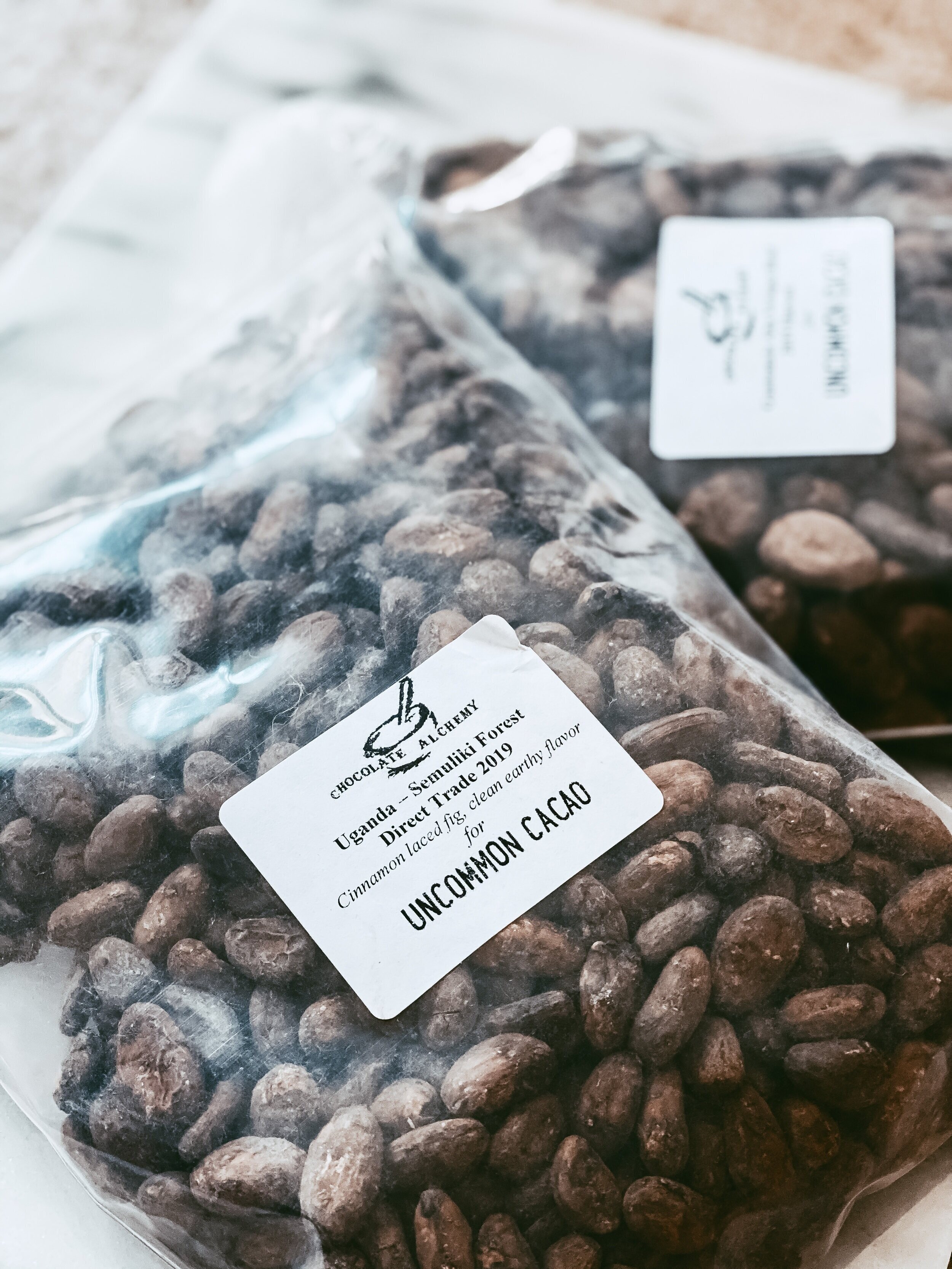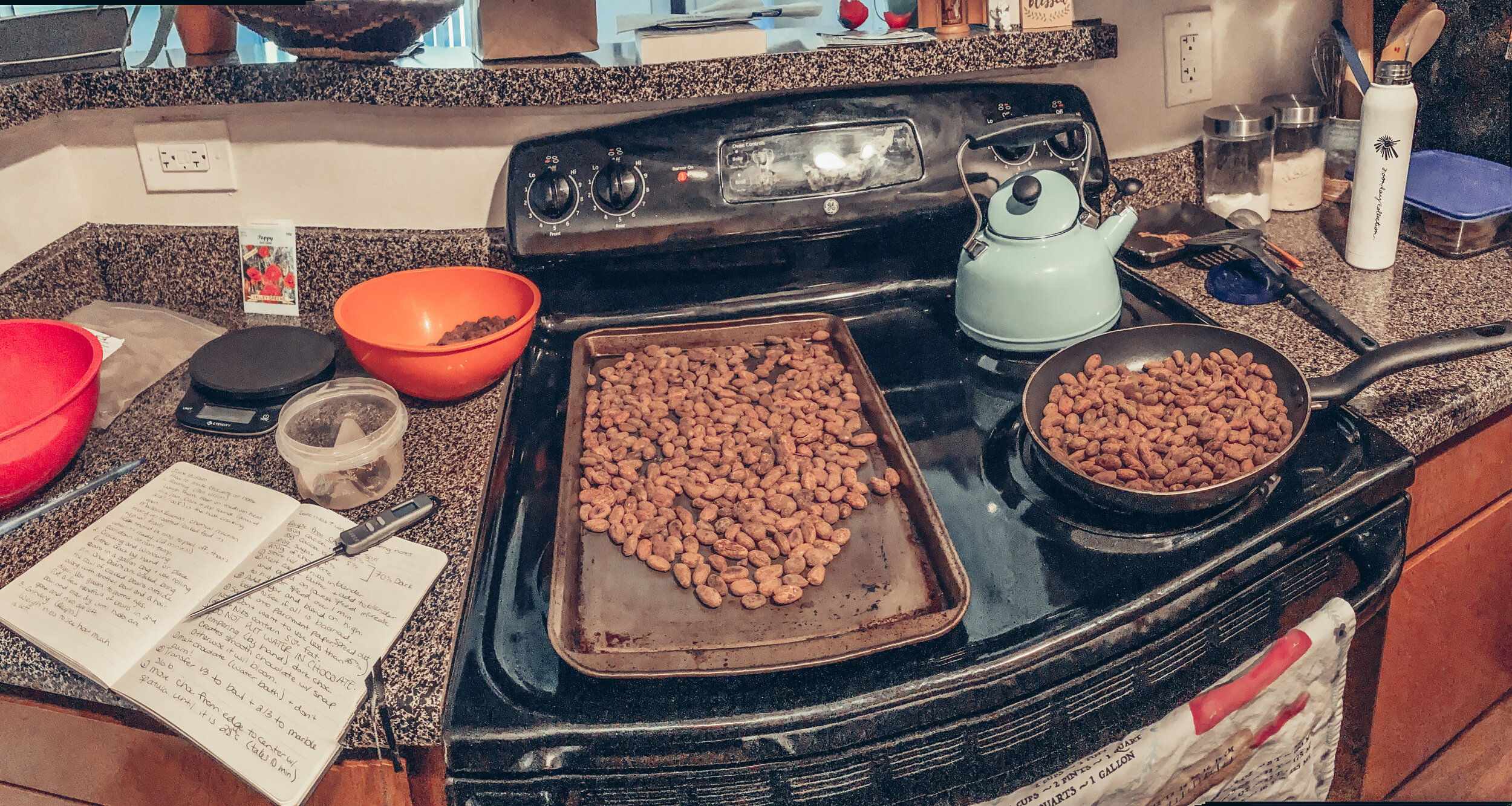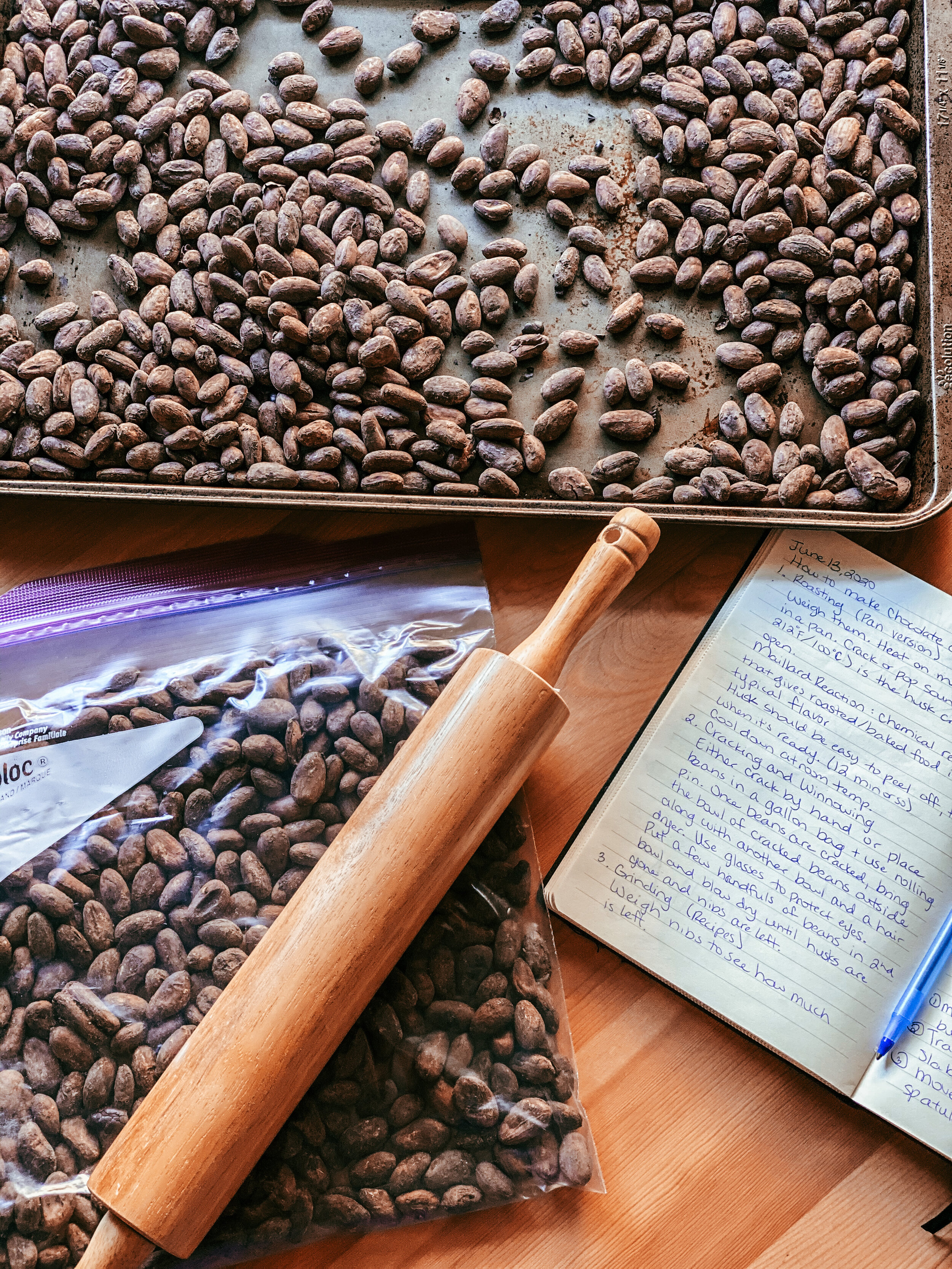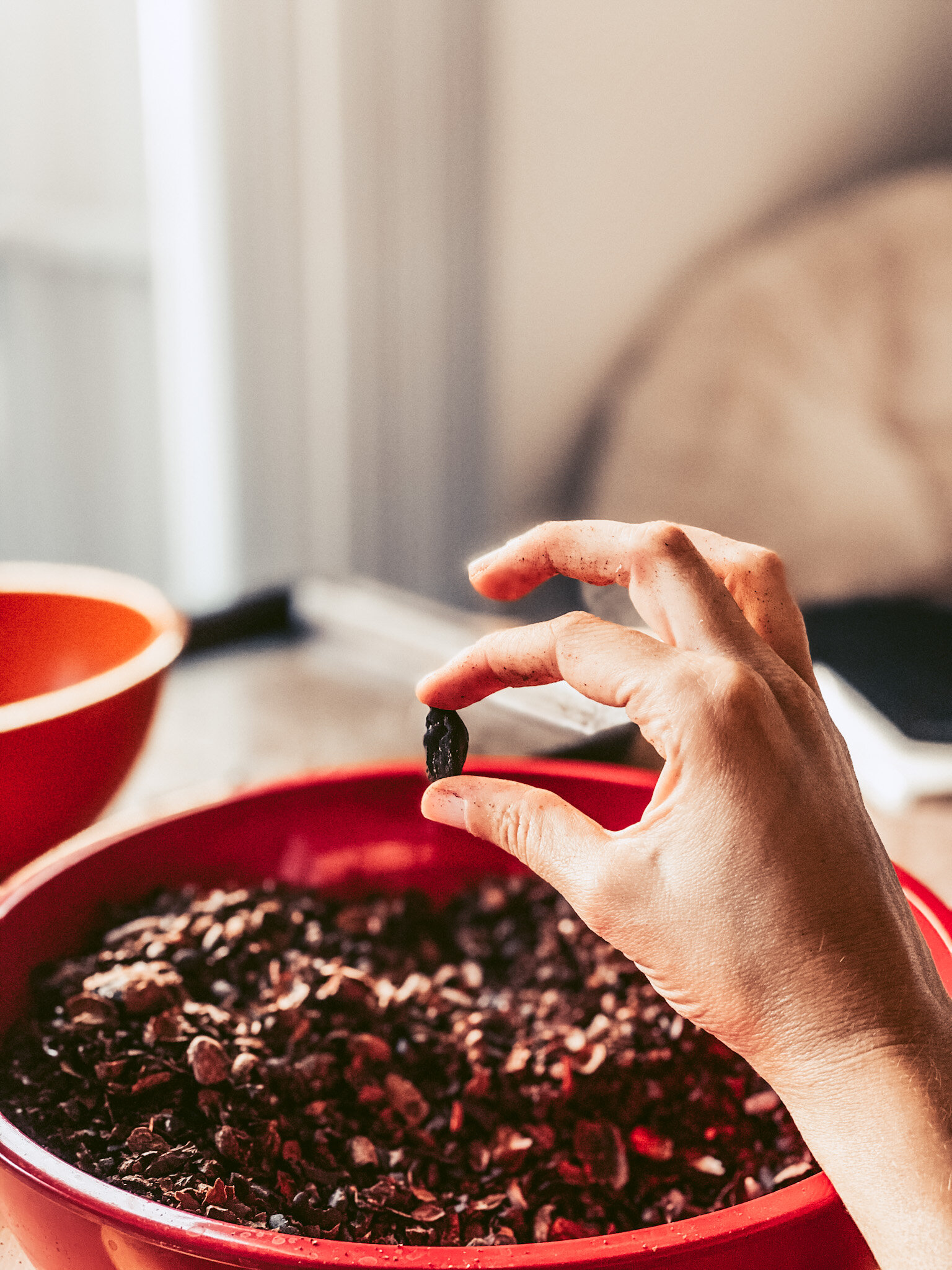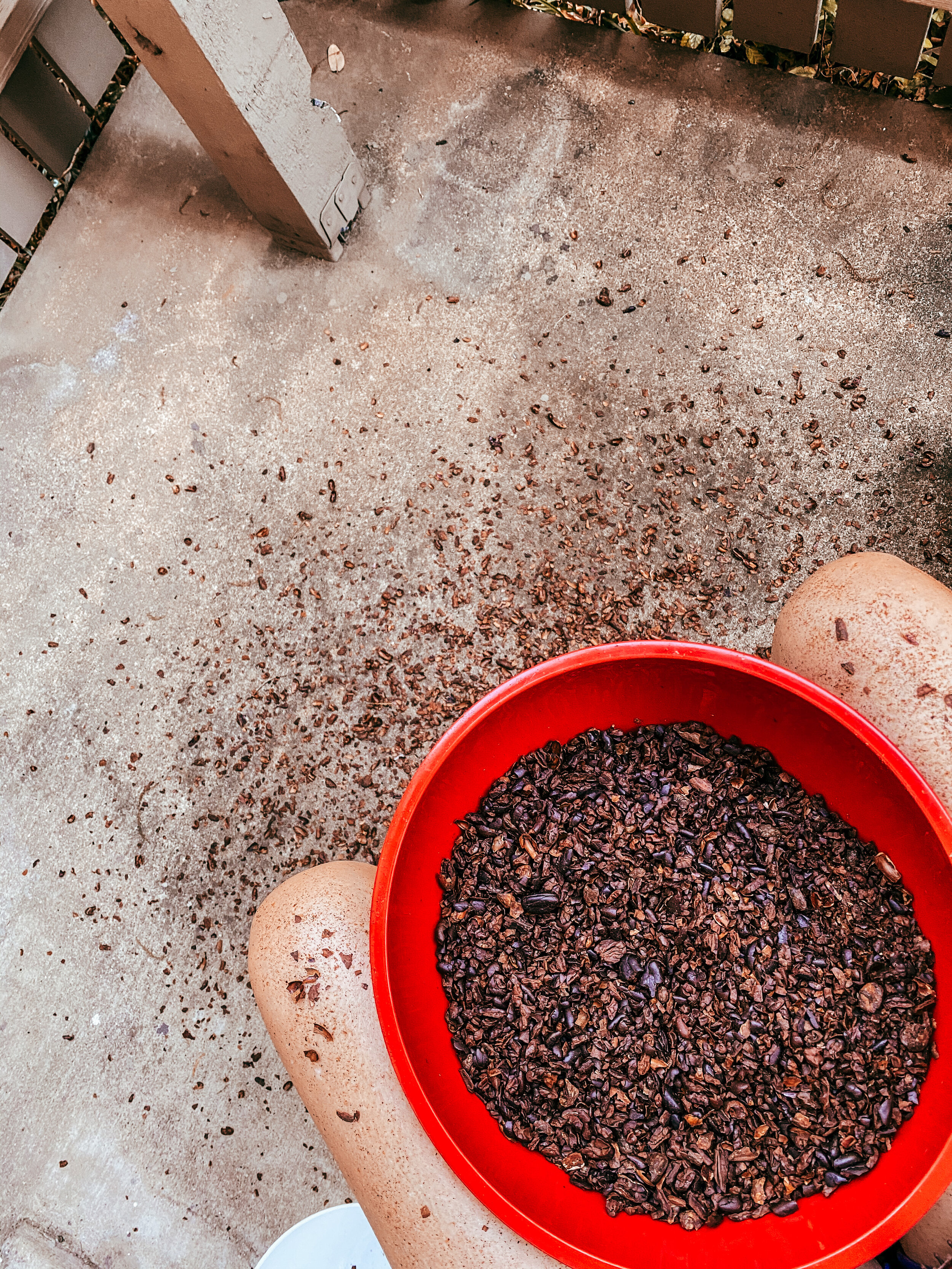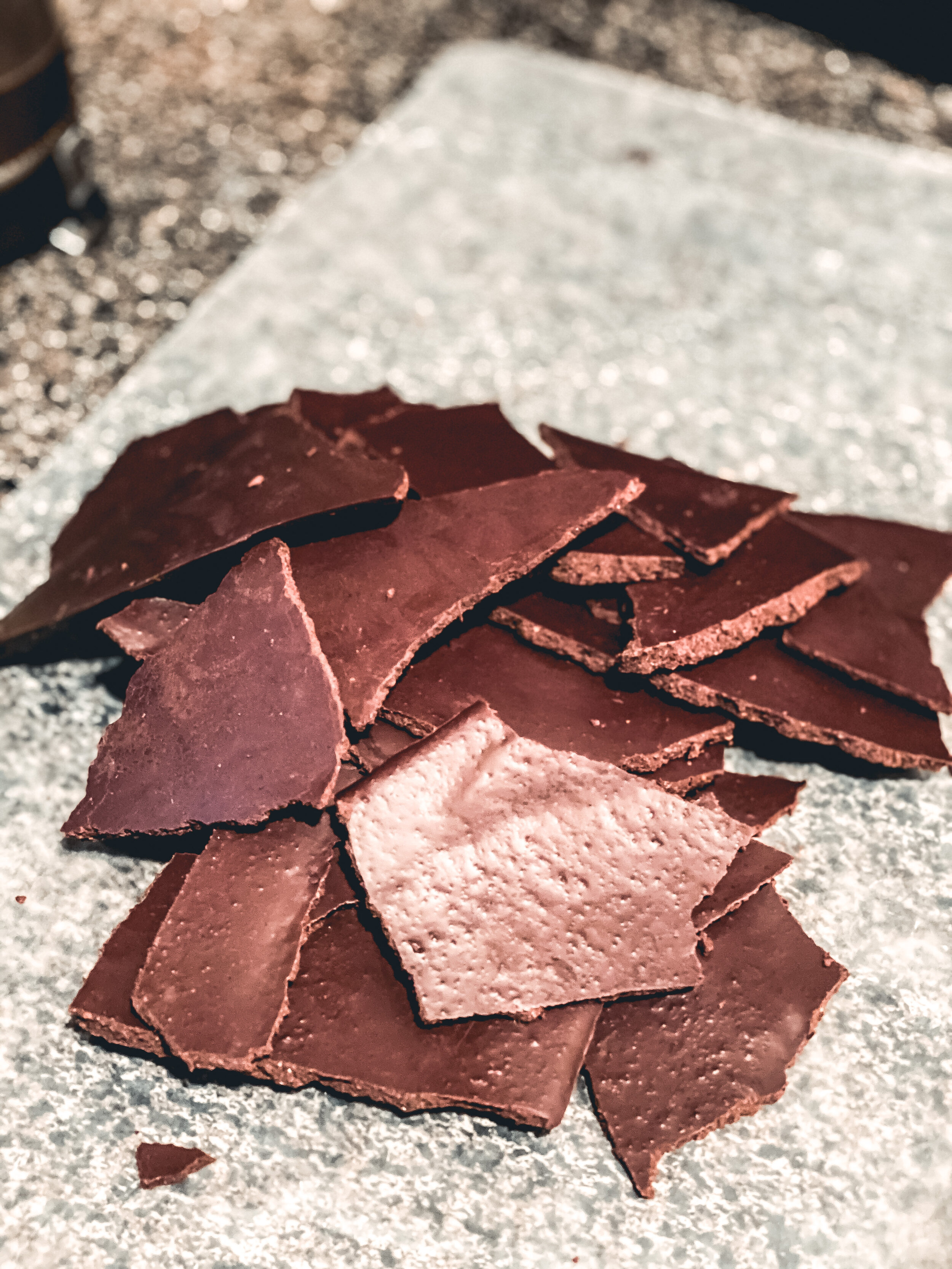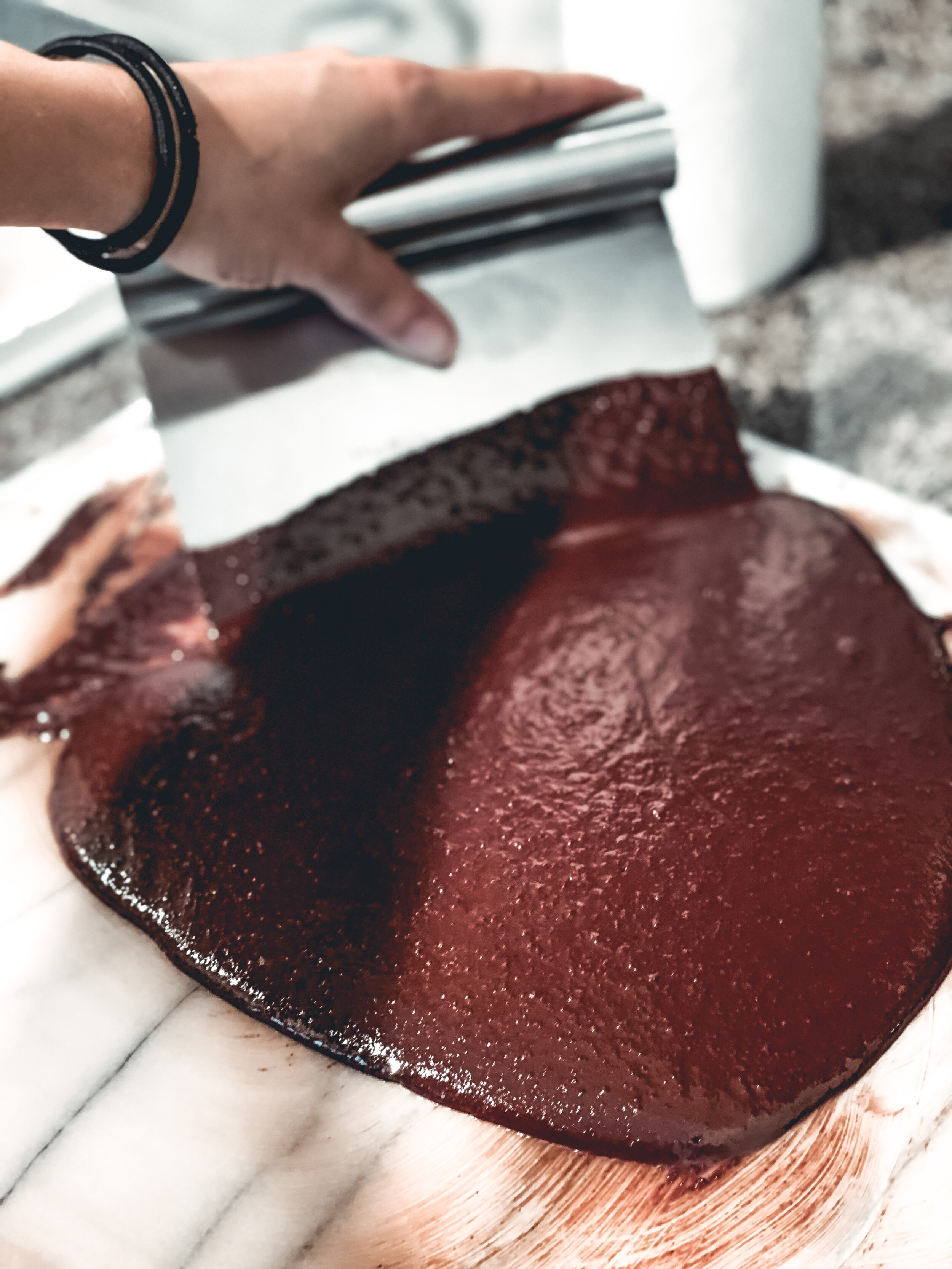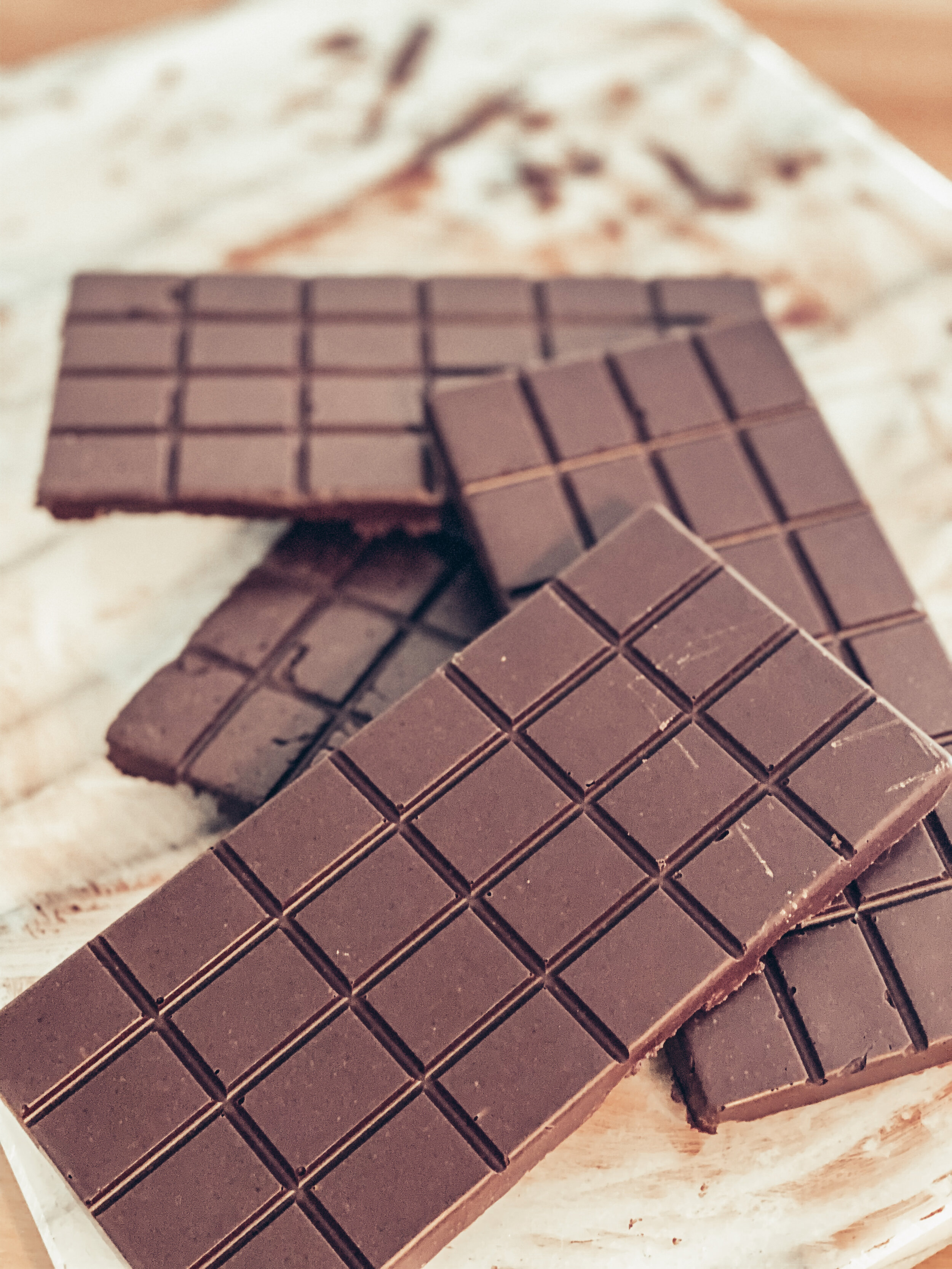Batch # 1 & 2 : The Blender Bars
On June 8, 2020 at 12:14am, after years of day-dreaming about making my own chocolate, I hopped onto Uncommon Cacao’s website and ordered my first 4 lbs of beans. Even though I had zero chocolate-making equipment and very little knowledge of the process, I knew I needed to take a leap of faith. — You have to start somewhere, right?
My first and second batches were made with cacao beans from Uganda, harvested in 2019. The beans were described as having flavor notes of chocolate ganache, fig leather, and red bean paste. (If you’re new to the world of craft chocolate, you will soon learn that it is much like fine wine, coffee, or craft beer. Each bean has different flavor notes, creating a unique and delicious tasting experience. More on this in later posts!) I chose this bean for two reasons: First, I’ve been really missing my friend Betty, who is living and serving in Jinja, Uganda. Second, the flavor combo sounded super interesting.
I decided I wanted to make to kinds of dark chocolate bars: 70% dark with cane sugar and 70% dark with coconut sugar, just to experiment a little and see how the sugar affected the flavor. — Once the beans came in, I gathered my ingredients and equipment and set to work! For those of you not yet familiar with the chocolate-making process, let me break it down for you.
Roasting: Step one is to roast the beans. Roasting releases any excess humidity in the beans while killing any bacteria and making your home smell like brownies. This gives the beans a nice toasted flavor, and makes them easy to crack and winnow. I read online that if you don’t have a roaster, you can either roast them on the stove or in the oven. I tried pan… We’ll talk about that later.
Winnowing: As with any bean or not, cacao has an outer shell called the husk. Winnowing is the process in which you crack the beans and separate them from the husks. While husks have their own fun flavor, only the beans are necessary for chocolate-making. (Once cracked, the beans are also sometimes called nibs. Yep, just like the superfood advertised in your grocery store.) Professionals use machines for winnowing, but since I am a complete newb, I cracked them with a rolling pin and separated the husk from bean with a blowdryer. (You guessed it, HOT MESS.)
Grinding: Once roasted and winnowed, the nibs are transferred to a machine called a melanger (or melangeur, since it’s French) that grinds the beans, creating heat that liquifies them and turns them into what we know to be chocolate. At this point you can add sugar to sweeten, cacao butter to smooth, and/or milk to make milk chocolate. As you can imagine, I do not have a melanger laying around, so I used my blender. RIP Vitamix.
Tempering: You know that moment when you unwrap a chocolate bar and you break off a piece? You know that beautiful snap sound it makes? Satisfying, am I right?! Well, that’s what tempering is for. During this stage, you have to heat the chocolate to a specific temperature (between 29 and 32˚C). This allows the sugar crystals within the chocolate to align, creating the shining look and that sweet, sweet snap. Once again, I have no tempering machine, so I did this by hand using two pots to double boil and a marble slab.
Cooling/Setting: Once the chocolate is tempered, you pour it into the moulds, refrigerate for an hour and POOF! Chocolate.
A few lessons learned from my beloved blender batches:
Stove-top roasting is not for me. I definitely roasted them a little too much, because there’s a very definitive toasty taste to the chocolate.
Winnowing with a blow dryer is MESSY. Note the picture above.
My blender was not meant for chocolate-making. Getting a melanger is definitely at the top of my list.
Using a blender creates a very gritty chocolate, since it cannot grind the beans up to a smooth paste.
The kind of sugar you use MATTERS. First of all, my blender strongly dislikes coconut sugar and barely ground the ingredients enough to pass for a chocolate bar. Second, the cane and coconut sugar bars taste entirely different. I’ll write about this in a later post along with feedback I received from my brave test subjects aka friends and family.
If you want something badly enough, you can make it happen. I had none of the appropriate materials for making chocolate, but I did it and it turned out pretty well
Overall, it was an incredible experience that provided an adventure for every single one of my senses. Batch numbers 1 and 2 certainly changed my life and locked in my passion. Here’s to batches 3 and 4! Stay tuned.
Additional Info for Curious Minds:
Uncommon Cacao works to create “meaningful market access for smallholder cacao farms”, connecting those farmers and their amazing beans to chocolate-makers around the world. Learn more about them here.
In case you’re curious to know more about these specific cacao beans and where they come from. Click here.
To learn more about my friend Betty and the incredible she and her friend Heather are doing in Uganda, check out their website.


